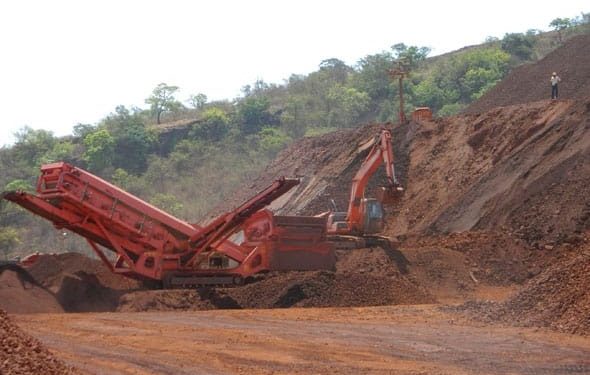Keonjhar: With mining activities continuing unabated in Keonjhar, the district is likely to run out of all its mineral resources within the next 20 years.
Rampant mining activities have sparked fears that if the mineral resources are not properly managed, the district will run out of all its mineral resources in 20 years.
Recently, the Supreme Court heard a public interest litigation (PIL, IA no-42571) seeking a cap on mining activities in states like Goa and Karnataka. Hearing the matter, the Supreme Court issued notices to the Centre asking it to file its reply in affidavits on the matter within a period of four weeks. Similar demands to cap mining activities in Odisha have also started doing the rounds.
The Shah Commission, which was probing the mining scam in the state earlier, had given a very scathing remark on the state of mining activities. The Commission had said that the miners are mindlessly excavating the mines for mineral resources.
The extraction of minerals more than the permissible limits has adversely impacted the environment, infrastructure like roads and the public life, it had clarified. The Commission had recommended the Central government to take action against the errant leaseholders by collecting penalties from them. It also directed to protect the environment and take steps for the development of affected areas.
Later, penalties were collected from the leaseholders and the mines were given on lease through tenders to maintain transparency. On the other hand, the government also brought in some amendments to Mines and Minerals Act, formed the District Mineral Foundations in the mining districts and made arrangements of funds which were utilised for the development of the mining-affected areas.
However, mining activities continue unabated for which demands are being raised to put a cap on mining activities like in other states.
According to documents submitted in the Supreme Court by the senior advocate Prashant Bhushan, the state has 4,748.52 MT of mineral deposits while 58 mines have been given on lease for mining. The annual extraction of mineral resources is 227.13 MT. However, this has sparked fear that the state will run out of its mineral resources if their extraction continues at the current rate.
Hearing the matter, the apex court has also directed the Odisha government to consider whether there is a need to put a cap on mining activities in the state and conduct a review and take steps in this regard.
Environmentalist Dushkar Barik said that the mineral resources could be properly utilised and environmental damage checked if a cap is enforced on mining activities in Odisha like Goa and Karnataka.
Social activist Gulab Mukhtar Rayen said that the state has a total of 9,229 million tonne of mineral reserves on the basis of the details provided by the state government. However, the mineral reserves could well be more.
The state has several mines but all are not being made operational, he said. He questioned why new and virgin mines are being given on lease instead of the old mines.
Notably, there are several mines in Keonjhar district where mining activities have been stopped but these are not being made operational. Lack of mining activities and proper management has turned these mines into large pits which are only endangering wildlife and humans.
Such mines are not being covered up or buried as per the mining closure plan. When there is talk of putting a cap on mining, the state government’s move to lease out a mine in Gandhalpada which is surrounded by a dense and virgin forest under Joda mining division has sparked a row.
PNN







































